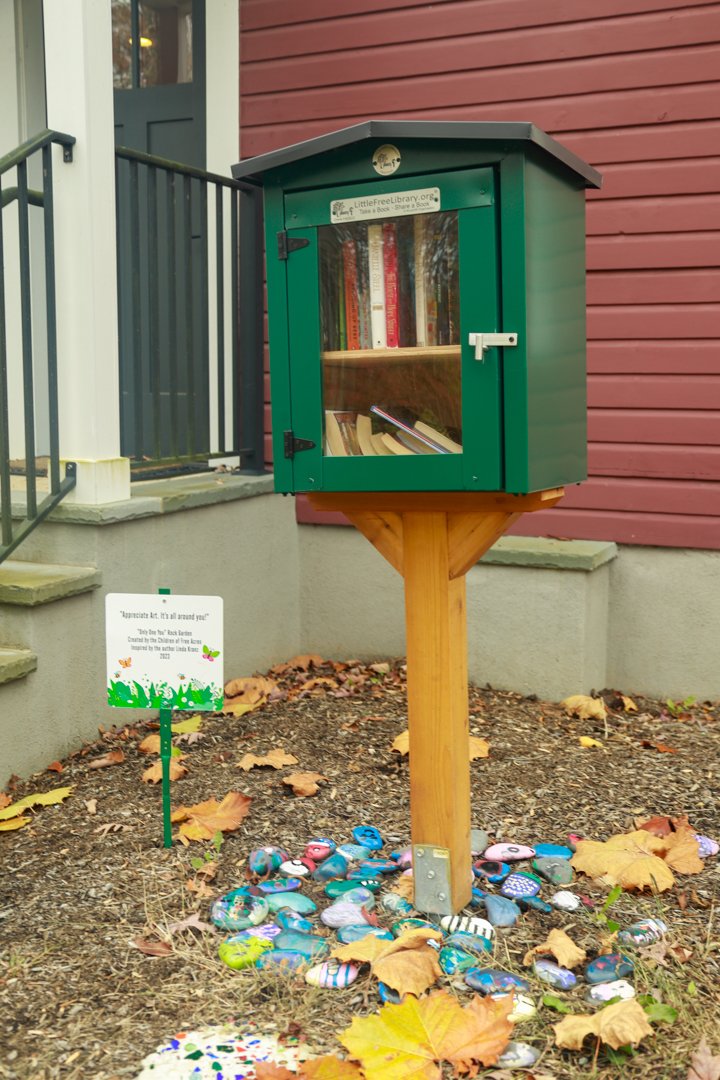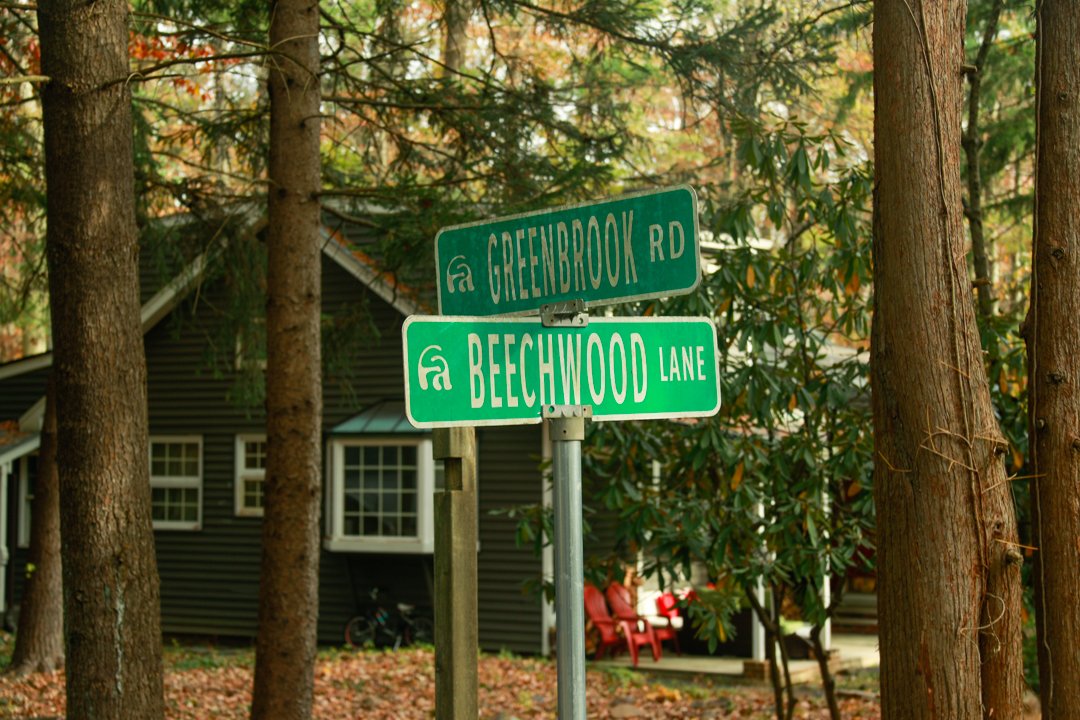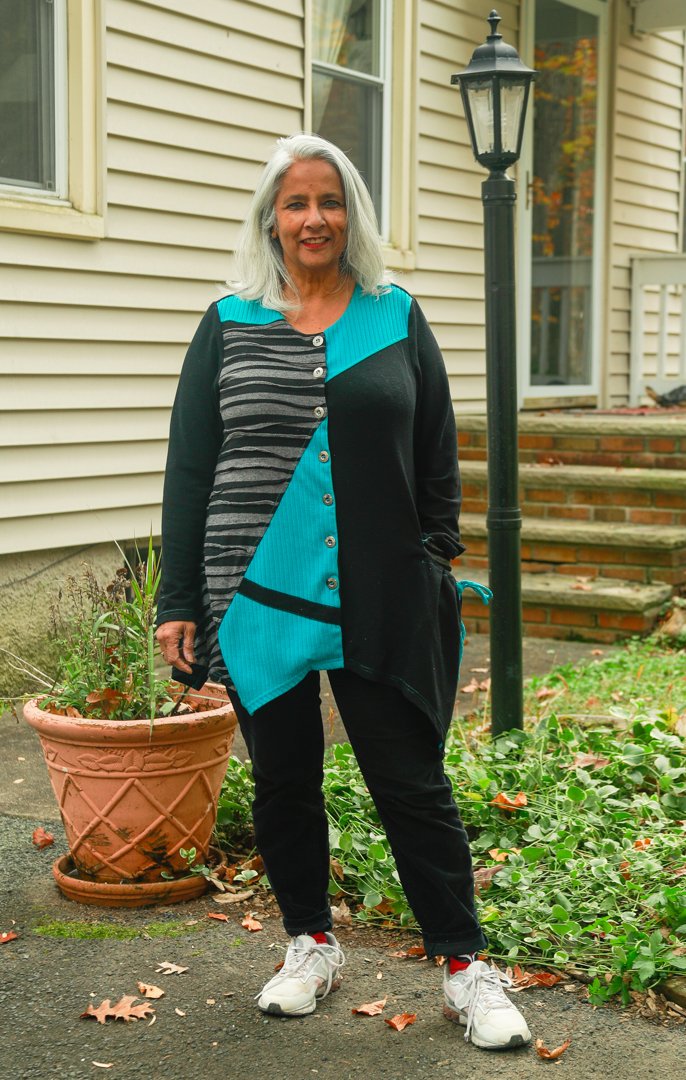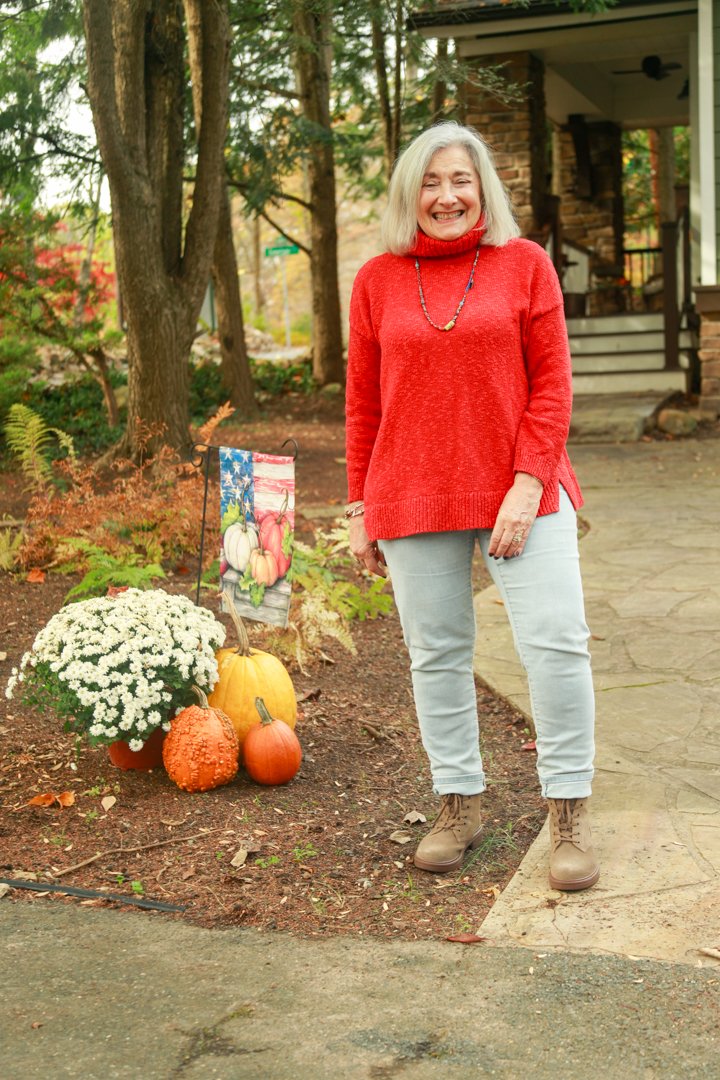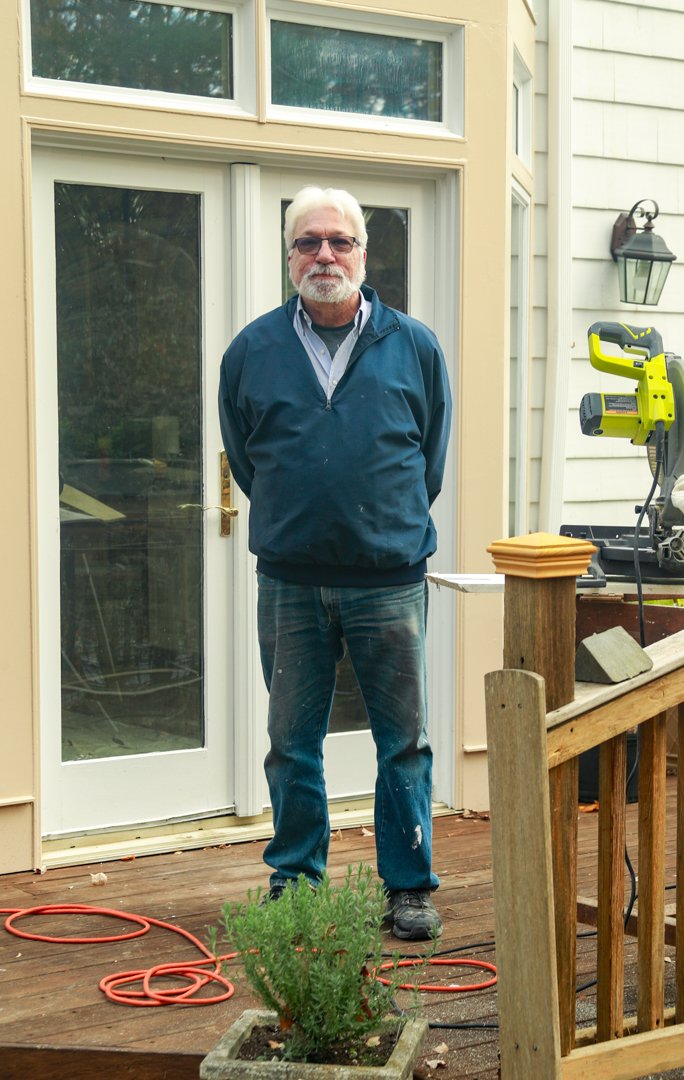Free Acres: A wooded north Jersey enclave with a utopian past
Johnathan Clark
Community founded on reformist principles embodies collective spirit
Every fall, the people of Free Acres, N.J., gather for a community bonfire. The festivities require substantial preparations: A fire permit must be obtained, and turf must be dug. There are hay bales to buy and kindling to collect.
In many New Jersey towns, those tasks would be performed by paid municipal employees. But Free Acres, a wooded 66-acre enclave in the Watchung Mountains of north Jersey, has always worked differently, ever since its founding in 1910 as the utopian project of a New York social reformer.
In self-governing Free Acres, located partly in the Union County township of Berkeley Heights and partly in the Somerset County borough of Watchung, volunteer residents organize the bonfire—and manage most other communal tasks, from budgeting to road repair.
Underpinning this shared self-governance is an unusual ownership structure rooted in the economic theories of 19th-century thinker Henry George: The residents of Free Acres own their houses, but not the land those houses stand on. That’s owned by the community as a whole, with the 85 lots rented out on renewable 99-year leases. When Free Acres folk gather for their monthly governance meeting, each leaseholder has a voice and a vote.
It’s something like a condominium association, minus the cookie-cutter uniformity the term suggests. Along Free Acres roads with names like Beechwood and Apple Tree, tiny bungalows perch near McMansions; curbs, streetlights and extensive fencing are banned; and huge trees tower over everything. Joint ownership and a tradition of self-government forge unusually tight bonds among the roughly 250 residents, which ensures support but sometimes brings friction. It’s a way of living that harks back to a less frenetic, less atomized past—if perhaps also a less cushioned and convenient one.
“Free Acres, to me, was always magical,” says Chuck Kleinberg, 51, an IT project manager who grew up in the enclave. “Once the people who move in get it, either they stay because they love it--and they acclimate and try and build that utopia--or they move out, because it's just not their thing.”
Courtesy of Eric Anderson
The journalist and economist Henry George, who died in 1897, was “the most widely read American economic writer in the 19th century,” says Jeffrey Sklansky, a professor of history at the University of Illinois at Chicago. In his 1879 treatise “Progress and Poverty,” which reportedly outsold every book but the Bible, George proposed a radical new tax system as a cure for the inequities spawned by economic growth. He ran unsuccessfully for mayor of New York City, lectured worldwide, inspired an early version of the board game Monopoly and spurred reform efforts from Andorra to Australia.
Among George’s followers was Bolton Hall, an Irish-born New York lawyer and real estate developer with radical political sympathies. By 1910, several small, experimental communities based on George’s ideas had taken root in the United States, and Hall decided to found another on land he owned in New Jersey.
George advocated a tax on land alone—the so-called “single tax”—as an antidote to market distortions caused by monopoly and speculation. Under a traditional property tax system like New Jersey’s, homeowners who invest in improvements—by, say, renovating a basement or adding a bathroom—see their taxes rise; meanwhile, slumlords who let their buildings deteriorate end up paying less, and land speculators face no penalty for leaving prime real estate undeveloped. George’s single tax aimed to recalibrate incentives by eliminating the tax on buildings while taxing land at a rate high enough to discourage buy-and-hold speculators.
George “does see capitalism as largely good,” says Christopher William England, a lecturer in history at Towson University in Maryland, whose book on George and his followers, “Land and Liberty: Henry George and the Crafting of Modern Liberalism,” was published this year. “But he sees monopoly and land value as the reason why capitalism is not working the way that it should. And so he also sees the single tax as a way of freeing up capitalism.”
The constitution that Bolton Hall drafted for Free Acres, his experimental “community for the study and demonstration of problems of self-government, social progress and taxation,” implemented a version of George’s land-tax principles. In Free Acres, land would be held in common; leaseholders could build homes on their parcels without increasing their tax liability; and the newly established, non-profit Free Acres Association would use the rent its members paid to cover municipal property taxes and fund communal expenses.
Hall envisioned a small, tight-knit community offering urban workers a modest rural retreat, and the constitution reflected his progressive and libertarian values: It banned discrimination based on “age, color or sex,” allowing women to vote a decade before the United States did, and it guaranteed residents “absolute freedom” as long as they respected others’ rights.
Free Acres attracted some famous names--among them the actor James Cagney and the writer Thorne Smith, best known for his comic novel “Topper”--and not every early resident shared Hall’s Georgist economic views. But many were left-leaning free spirits, “a curious collection of dancers, artists, actors, writers and storytellers, as well as just plain folks who were stimulated by what transpired there,” state planner Martin A. Bierbaum, a longtime resident, wrote in a 1986 article. “Much of their energy was channeled into political discussion and ambitious theatrical productions.”
At first, Free Acres was a summer colony for city-dwellers, and local officials seemed content to tax the land and ignore the spartan bungalows and lean-tos, which lacked heat and indoor plumbing. But over time, more residents moved in year-round, expanding and winterizing their homes, and by the mid-1930s, Bierbaum notes, municipal assessments had increased accordingly. Dividing that bigger tax bill among all Free Acres folk forced those with smaller homes to subsidize those with larger ones.
The inequity pointed up the difficulty of maintaining a Georgist enclave in a non-Georgist world, and in response, Free Acres changed its tax system: The association would continue to divvy up the land tax among leaseholders and charge an additional fee for communal needs, but homeowners would pay the tax on their own dwellings.
Bolton Hall was so disgusted by this departure from pure Georgist principles that he left the community, never to return. But the tax structure endured. Today, each Free Acres leaseholder pays nearly $3,400 a year to cover communal costs, on top of municipally assessed property taxes. Three volunteer trustees; a clerk and treasurer, each paid $15,000 a year; and 11 volunteer committees effectively run the community, handling such matters as road repair, garbage collection and swimming-pool maintenance.
Even as its tax structure became more conventional, the enclave retained its unconventional self-governing ethos--and its reputation for bohemianism. In 1990, when Greg Hewett’s family bought its Free Acres home, the lawyer handling the closing “kept referring to ‘you people over there in Freak Acres,’” says Hewett, 69, a construction manager. Outsiders “always considered the people in Free Acres somewhat strange or somewhat different,” says Terry Conner, 75, Thorne Smith’s grandson, a one-time sales director who grew up in Free Acres and moved back in adulthood. “I was called a nudist as a teenager. They thought we ran around up here naked.”
The nudism may have been overhyped, but the community’s values remained distinctive. “People would go to meetings, and nobody was dressed up. Nobody was driving fancy cars,” says Rona Stern, 78, a clinical social worker who lived in Free Acres from 1971 to 1994. “It wasn't about possessions and expenses and keeping up with the Joneses.”
Free Acres still has a scruffiness alien to more manicured suburbs. “In another condo community, it would be, like, ‘Cut your grass!’” says Cheryl Venter, 71, a human resources professional and 26-year Free Acres resident who recently served as treasurer. “There are some people that get a little pissed about it, under their breath. But that's not what we do.”
Free Acres’ pastoral setting contributes to this culture—indeed, one of the community’s few rules is a ban on the unauthorized felling of any tree bigger than a sapling. “There's really a sense of connection with the land,” says Meera Rao, 68, a non-profit administrator who recently completed a three-year term as trustee. “There's really a sense of being rooted in it.”
That rootedness makes for idyllic, old-fashioned childhoods, according to Free Acres folk: The strong connections among adults provide a structure within which children can safely be set free to explore. Residents whose memories stretch from the 1940s to the 2020s describe parents routinely sending kids outdoors to spend long, unsupervised days roaming the wooded paths on foot or bicycle, playing pickup ball games, or hanging out at the beloved community swimming pool, known for the beach-like sand that surrounds it and the bracingly cold spring water that feeds it. “Everybody knows everyone. There's a comfort to that,” says Rao, who moved to Free Acres in 1997, when her son was 7. “That, kind of by osmosis, just flows into the kids. There's no anxiety.”
It’s a way of life that can seem countercultural in screen-dominated suburbia. “I feel like we've done right by my daughter for her to grow up in this neighborhood,” says Kristina Doney, 38, a barber who has lived in Free Acres for about a decade and has a 7-year-old. “Because it's not your typical neighborhood. It really is something special.”
The community has its annual rituals—the summertime pool party, the Halloween costume parade, the bonfire—but equally important is informal socializing, residents say. “At one point, we knew almost everybody on Beechwood,” says Hewett, who raised three now-adult children in Free Acres. “Summertime, somebody was always hosting a little cookout, almost every night. You would just wander over to somebody's place and bring something.” During the Christmastimes of her childhood, Kristine Mitchell would go caroling. “Everyone would have their candle, and we'd be walking house to house,” recalls Mitchell, 54, who grew up in Free Acres and later worked in finance. “You knew everybody in Free Acres, and every third house would invite you in for cookies and hot chocolate.”
That familiarity comes in handy during times of personal or communal stress. When Superstorm Sandy killed the power for two weeks and left streets blocked with downed trees, neighbors pooled their resources, from chainsaws to bottled water. When COVID quarantine closed in, Doney and her husband chalked a daily joke onto their street, to entertain passing neighbors. And when Kleinberg’s mother died earlier this year, neighbors rallied around his bereaved father. “That's the Free Acres way,” Kleinberg says. “People are like, ‘Hey, let’s do dinner,’ and suddenly neighbors are coming over. It's kind of like everyone just adopts each other along the way.”
Those bonds are forged—and sometimes tested—in the crucible of Free Acres’ self-government, residents say. “What I chiefly remember . . . as a teenager growing up, was the high sense of drama and interest that the grown-ups felt in managing their affairs,” Daryl Maslow Hafter, who lived in Free Acres in the 1940s and ’50s, wrote in a 1992 community anthology. “It was really quite an extraordinary thing to grow up in a community that was linked together in a more organic way than streets and houses in an ordinary town. There was a binding together with neighborliness that went far beyond the name.”
Although the municipalities provide police and fire protection, and outside contractors handle roadwork and garbage collection, residents are expected to volunteer for smaller jobs like the end-of-season swimming pool repairs and the playground cleanup. “The more people that do it, the less money you have to spend on having somebody come in and do it for you,” Doney says. “Everybody pitches in. I think it's important for the kids to see that, as adults, you can help each other out, and help out the community that you all use.”
Inevitably, the work isn’t always harmonious. “The good thing is that you’re in business with your neighbors,” Hewett says. “And the bad thing is you're in business with your neighbors. It is a very unique place, but it is not utopian.”
One-time resident Linus Yamane learned that lesson decades ago when, as a preteen, he sat in on a monthly meeting. Yamane, 64, now a professor of economics at Pitzer College in California, was used to his parents’ scoldings when he fought with his younger brother, their insistence that he resolve his differences the way adults did—by talking, not fighting. But at the meeting, Yamane watched as a man on the losing side of a vote stormed out, shouting at one of his opponents, “Don't you ever come to ask to borrow my lawnmower again!” “I was thinking, ‘This doesn’t seem very mature,’” Yamane says.
Meetings are not as well-attended as historical photos suggest they once were--Eric Anderson, 50, a TV news cameraman who has lived in Free Acres for 14 years, estimates that perhaps 15 of the 85 leaseholds typically send a representative, with another 15 or 20 leaseholds represented in committee membership. But as Free Acres folk debate the annual budget, assess flood-prevention measures or discuss requests to fell trees, the gatherings can still get testy, residents say. And the downside of the community’s close bonds is the impossibility of completely avoiding those you vehemently disagree with. “I want to go voice my opinion to a city council, I’m never going to see them again,” Anderson says. “If I have to bring my grievance to one of the trustees, he's going to drive by my house.”
from left: Meera Rao, Cheryl Venter, Harris Ruben, Chuck Kleinberg, Greg Hewett, Eric Anderson
Of the 17 American communities founded on the land-tax principles of Henry George, only a handful survive, and some Free Acres folk wonder what the future holds for their experiment. Typical suburban threats loom—the noise from nearby Route 78, the traffic and stormwater runoff from developments in Berkeley Heights—but at least as far back as 1936, when Bolton Hall left in a huff, Free Acres folk have also worried about preserving the character of their enclave. “In the beginning, Free Acres was a delightful but impractical experiment, but oh, so charming,” a Free Acres resident named Lilian Leon wrote in a nostalgia-drenched community chronicle published in 1949. “Nowadays, with its predominance of hardheaded businessmen, its picturesqueness is gone. From a simple summer colony, it has changed to a comfortable middle-class suburban community.”
Today, the evolution continues. Although Free Acres doesn’t collect demographic information on its residents, old-timers say its racial makeup, once nearly all white, has grown somewhat more diverse. Free Acres residents are no longer invariably leftwing, and as housing prices in New Jersey have skyrocketed, fewer starving artists are moving in: Last June, one house sold for more than $850,000, and a derelict teardown is currently listed at $199,000. “There are no poor people here anymore,” says Harris Ruben, 85, a one-time Wall Street back-office worker, whose family arrived in Free Acres in 1919.
History defines Free Acres more than it does many newer communities, but older residents are passing away, snapping the living links to that past. Anderson wonders if newcomers, with their busy lives, will sustain the community’s tradition of volunteerism. “If only the same 15 households are making all of the decisions for everybody, that's not really the spirit of what this is,” he says.
The annual Free Acres bonfire is Anderson’s favorite day of the year, despite the work required to pull it together. “There’s people that have to do all that stuff, and there's a community involved in that,” he says. “And then you sit around and have this great night.” Neighbors gather to share snacks and drinks. Dave brings his guitar, Danny hands out whiskey shots, and kids roast marshmallows over the flames while adults talk until all hours.
“We need these little havens of alternate lifestyles,” says Rao, the former trustee. “These values that it engenders in us--cooperation, community, doing things together--I think those things are important to keep.”
Deborah Yaffe is a freelance writer based in Princeton Junction, N.J. She worked as a newspaper reporter in New Jersey and California for 14 years and is the author of two books: “Other People’s Children: The Battle for Justice and Equality in New Jersey’s Schools” (Rivergate Books, 2007) and “Among the Janeites: A Journey Through the World of Jane Austen Fandom” (Mariner Books, 2013).
This article is the second of CivicStory’s Humanities Reporter series, funded in part by the New Jersey Council for the Humanities and the National Endowment for the Humanities.



